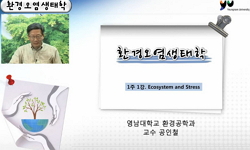표현효과(wording effect)는 방법효과(method effect)의 일종으로 응답자가 문항 내용과 관계없이 문항 표현 방식을 기준으로 설문에 응답하여 발생하는 체계적인 편파를 의미한다. 본 연구의 목적...
http://chineseinput.net/에서 pinyin(병음)방식으로 중국어를 변환할 수 있습니다.
변환된 중국어를 복사하여 사용하시면 됩니다.
- 中文 을 입력하시려면 zhongwen을 입력하시고 space를누르시면됩니다.
- 北京 을 입력하시려면 beijing을 입력하시고 space를 누르시면 됩니다.

표현효과(wording effect)의 종단적 변화 양상 탐색 : 자아존중감 척도를 중심으로 = Wording Effects in Psychological Longitudinal Measurement: An Exploration of Change and Stability
한글로보기https://www.riss.kr/link?id=A108078852
- 저자
- 발행기관
- 학술지명
- 권호사항
-
발행연도
2022
-
작성언어
-
-
주제어
방법효과 ; 표현효과 ; 응답양식 ; bi-factor CFA ; LPA ; LTA ; method effects ; wording effects ; response style ; bi-factor CFA ; LCFA ; LPA ; LTA
-
KDC
370
-
등재정보
KCI등재
-
자료형태
학술저널
- 발행기관 URL
-
수록면
137-164(28쪽)
- 제공처
-
0
상세조회 -
0
다운로드
부가정보
국문 초록 (Abstract)
표현효과(wording effect)는 방법효과(method effect)의 일종으로 응답자가 문항 내용과 관계없이 문항 표현 방식을 기준으로 설문에 응답하여 발생하는 체계적인 편파를 의미한다. 본 연구의 목적은 이러한 표현효과의 종단적 변화 양상을 검증하는 것이다. 이를 위해 ‘한국아동청소년패널조사 2010’ 초4패널 중 2차년도(초5), 4차년도(중1), 7차년도(고1)의 총 5년에 걸친 조사에서 Rosenberg(1965)의 자아존중감 척도에 모두 응답한 1,848명을 대상으로 종단적 이중요인 확인적 요인분석(longitudinal bi-factor confirmatory factor analysis)과 잠재전이분석(latent transition analysis)을 실시하였다. 분석결과 첫째, 자아존중감의 이중요인 구조를 통해 긍정문항과 부정문항에 대한 표현효과가 검증되었다. 둘째, 세 시점(초5, 중1, 고1)에 걸친 요인구조는 안정적인 것으로 나타났고, 부정문항에 대한 표현효과는 고1 시점에서 유의한 증가 양상을 보였다. 셋째, 모집단 내 부정문항에 대해 차별적으로 반응하는 표현효과 응답양식 집단이 존재하고 발달 과정에서 표현효과 응답양식을 그대로 유지하는 안정집단과 표현효과 응답양식을 탈피하거나 새롭게 진입하는 변화집단이 확인되었다. 마지막으로 본 연구를 논의하고 추후 연구를 위한 제언을 추가하였다.
다국어 초록 (Multilingual Abstract)
Wording effects is one of the most common responding biases in self-reported scales composed of positively and negatively worded items. This article extends the existing literature to longitudinal research setting by attempting to test individual diff...
Wording effects is one of the most common responding biases in self-reported scales composed of positively and negatively worded items. This article extends the existing literature to longitudinal research setting by attempting to test individual differences, stability and change of wording effects over time. Specifically this study used both variable-centered approach (i.e. bi-factor LCFA) based on population homogeneity assumptions and person-centered approach (i.e. LTA) based on population heterogeneity assumptions. For this purpose, 1,484 data were obtained from the Korean Children Youth Panel Survey(KCYPS) across 3-waves using the Rosenberg’s Self Esteem Scale(RSES) and were analyzed. The results are as follows. First, the factor structure of the self-esteem showed some different patterns over the three points in time. But it was found that the bi-factor models with wording effects factor added were fit in common. Second, the factor structure of the self-esteem was found to have a certain level of longitudinal measurement invariance, indicating that the wording effects factors were interpreted in the same meaning over three points. Third, there was no significant difference in the wording effects of negative items between elementary school and middle school, but a significant increase in the effect size of a small degree was confirmed at the time of high school. Fourth, two subgroups of participants who respond differentially according to item-wording were found and they showed a little bit balance of stability and change across three time points. Finally, the theoretical implications of the results were discussed.
목차 (Table of Contents)
- Ⅰ. 서론 Ⅱ. 이론적 배경 Ⅲ. 연구방법 Ⅳ. 연구결과 Ⅳ. 요약 및 논의
- Ⅰ. 서론 Ⅱ. 이론적 배경 Ⅲ. 연구방법 Ⅳ. 연구결과 Ⅳ. 요약 및 논의
동일학술지(권/호) 다른 논문
-
혼합효과 랜덤 포레스트를 적용한 중학생의 학업성취도 설명 변인 탐색 : 국가수준 학업성취도 평가 결과를 중심으로
- 한국교육평가학회
- 정혜원(Hyewon Chung)
- 2022
- KCI등재
-
IRTree 모형을 활용한 TIMSS 2019 자료의 극단응답양식 탐색
- 한국교육평가학회
- 조영진(Yeong Jin Jo)
- 2022
- KCI등재
-
국가수준 학업성취도 평가에서 단계적 검사의 적용 가능성 탐색
- 한국교육평가학회
- 한정아(Junga Han)
- 2022
- KCI등재
-
텍스트 자료에 대한 네트워크 분석과 토픽 모델링 : 대학 역량기반 교육을 중심으로
- 한국교육평가학회
- 이서진(Seo-jin Lee)
- 2022
- KCI등재




 스콜라
스콜라



